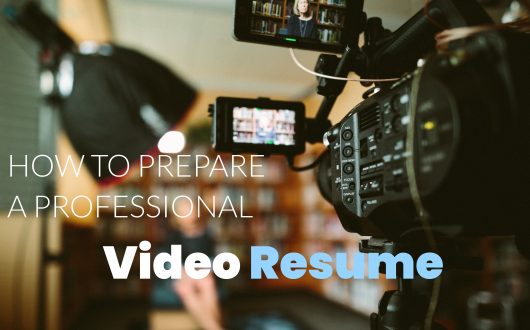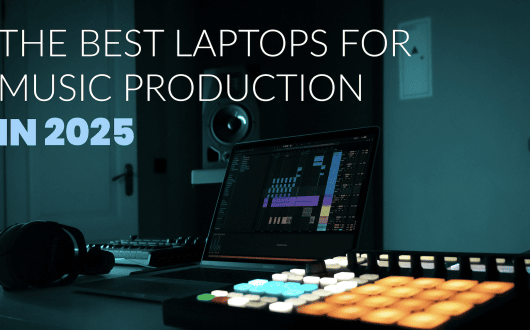
The Audio Buzz Blog

How And Why You Should Download Music In 2025 – A Music-Lovers Guide
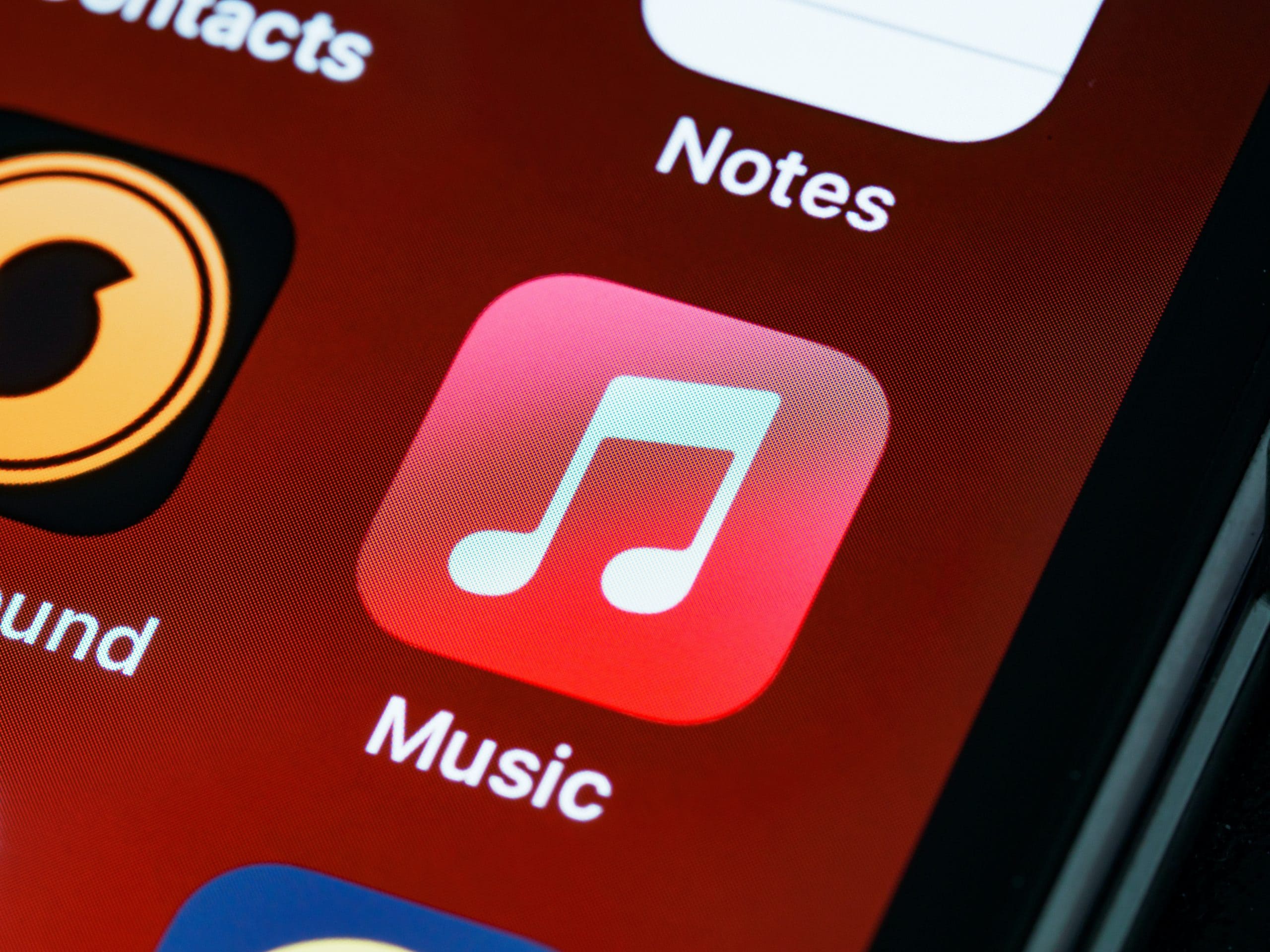
Photo by Brett Jordan on Unsplash
How And Why You Should Download Music In 2025
It’s hard to imagine a world without music; many of us rely on it daily, whether getting us through a difficult time, keeping us motivated at work, or just kickstarting our day. Luckily, it’s not something we need to worry about too much, with new artists emerging all the time and numerous digital platforms sharing their work. So, in a time when we have YouTube, Spotify, and countless other online streaming services, do we really need to discuss the best ways to download music? Yes, we do. We’ll talk about why and where you should download music in 2025; let’s go.
Is Downloading Music As Dead As Your VHS Collection?
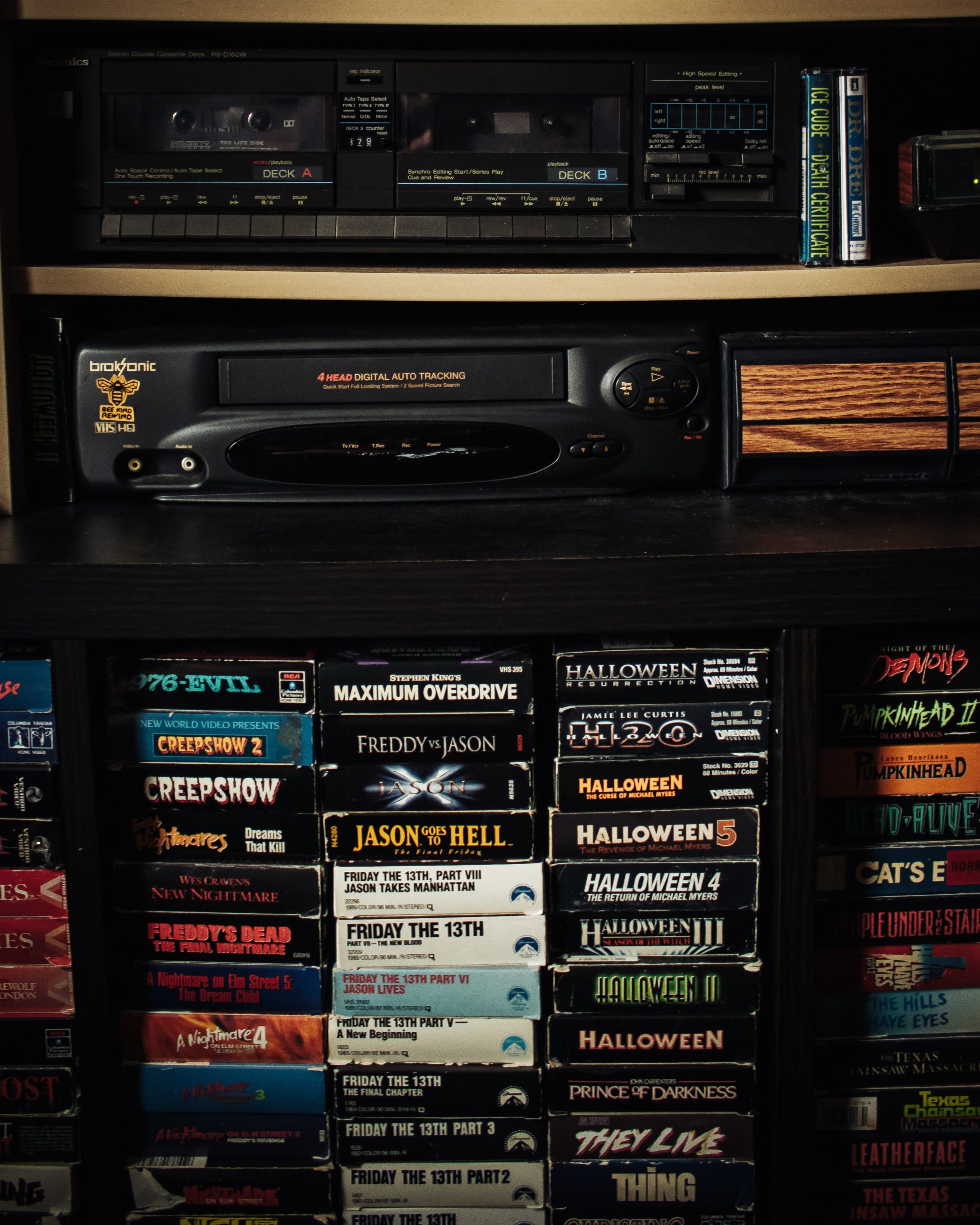
- Photo by Bruno Guerrero on Unsplash
Downloading music is not dead, nor is it what it once was before the streaming platforms came along.
In 2012, consumers downloaded almost one and a half billion music singles in the United States alone.
That number signifies the peak of music downloading, which fell consistently over the next few years.
In 2016, the drop got steeper, with single downloads reducing by almost 250 million to 743 million.
In 2021, consumers downloaded 209.3 million music singles in the United States.
There are a few ways to look at that number, which will undoubtedly divide opinions.
On the one hand, we now have artists who can amass billions of streams on their own relatively quickly, like Lewis Capaldi.
With that in mind, 200+ million downloads across all artists seem like nothing in comparison.
On the other hand, it’s still a high enough number to make you wonder why people are still doing it.
And, believe it or not, there are still a few valid reasons to download music.
So, in summary, downloading music is not dead; you could think of it like the character Boris The Blade in Guy Ritchie’s Snatch.
No matter how many ways and times you try to kill it, it just won’t go away easily.
Why Should I Download Rather Than Stream?
Well, it’s not exactly a straight choice between downloading or streaming, so you don’t have to pick a team and stick with it.
It’s more about choosing the right option for your current needs or situation.
Let’s look at a few factors that should contribute to your decision.
Data Allowances
Admittedly, with unlimited data plans, monitoring your data usage is less of a priority these days, but it’s still something to consider.
If you’re streaming or downloading music on a mobile device, which many of us do, you might have a monthly data allowance to consider.
The last thing you want to do is go over your allowance and find you have a phone bill that’s over double the cost you expected.
This post isn’t a tech article, so we don’t need to go into the specifics of existing data plans (phew!).
What we do need to focus on is the difference in data usage between streaming and downloading.
There are various factors at play, most notably the quality of the file, which we’ll go into more shortly.
To make things slightly more confusing, the data usage in streaming vs. downloading (assuming the same file/playback quality) is virtually the same.
Why not stick to streaming if it’s virtually the same data usage?
Here’s an example; let’s say the latest line dancing album is released; that’s what the cool kids listen to these days, right?
You’ll listen to that album many times till you get bored of it.
Streaming uses the same amount of data every time you stream a song.
Downloading, on the other hand, uses data during the download process, but beyond that, you can listen as often as you like, even without an internet connection.
If you know you’ll listen to something repeatedly, downloading it is the most efficient option.
Playback Quality
We mentioned above that the data usage is virtually the same, assuming the playback quality is the same.
To follow on from that, it’s worth considering the audio quality you expect.
If you’re an audiophile who needs to stream at the highest available quality, that will eat through your data even faster.
Connection Strength
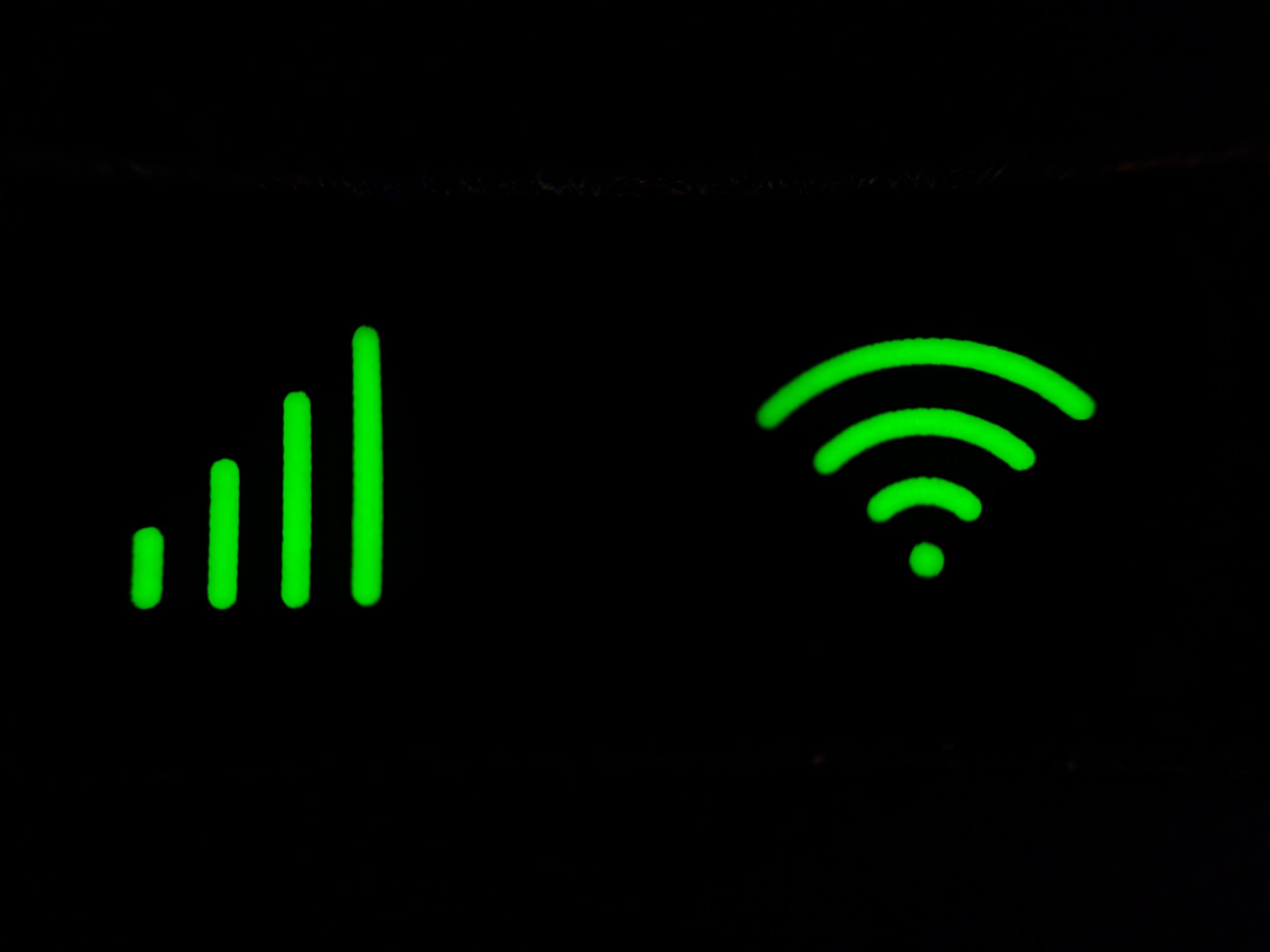
- Photo by Praveen kumar Mathivanan on Unsplash
The playback quality you stream music at is a choice to an extent, but when your connection is weak, the choice is made for you.
A weak signal means you’ll stream at the lowest settings.
A weak signal could also mean dropouts, which doesn’t make for an enjoyable listening experience.
Downloaded music requires no internet (after downloading), so you can always be assured of the same quality without dropouts.
Storage
If you’re listening to music on a desktop or laptop computer, you probably have a decent amount of storage space for downloading music.
Also, you can buy external hard drives relatively cheaply for additional space.
However, storage is likely more precious on a mobile device, which is terrible for downloading.
If storage is an issue and you avoid downloading, keep an eye on your data usage if you aren’t on an unlimited data plan.
But, even with limited storage space, some situations warrant planned music downloading.
Here are a few examples:
Traveling
When we get on a plane, the airline tells us to put all mobile devices into airplane mode (or off).
Airplane mode means we can’t stream anything, and it’s the perfect time for a pre-downloaded in-flight playlist.
If you need some inspiration for your travel playlist, check out some of the best travel songs ever.
Similarly, if you know you’ll be in a more remote location where you’ll struggle to get a great internet connection, a pre-downloaded playlist makes all the difference.
It’s also worth checking if you’ll have additional roaming costs when using your data abroad.
Situation-Specific Playlists
There are lots of situations, like air travel, that merit a situation-specific playlist.
One of the most common examples is a study playlist, which is often relaxing Classical music, Jazz, or Lo-Fi beats.
When studying at home, it’s easy to search YouTube and find many pre-made playlists ready to stream.
But, what if you want to study in the fresh air; in the park, for example?
Now, you’ll be streaming using your mobile data again, and considering many students stick to the same playlist every time they study; it makes sense to download one in advance.
It’s Not Convenient
Downloading music will never be as convenient as streaming.
It can’t offer the same instant playback; nowadays, no one likes to wait for anything if we don’t have to.
As you can see, there are legit examples of downloading being the better option, and if not the quickest, it can sometimes be the smartest.
We could give more examples of when you should download, but to be honest, they are mostly variations on the same idea, making the most of situations where data, connection strength, location, and so on make streaming costly and difficult.
Support The Artists
We want to add a short note on supporting the artists.
Less established artists often get lost amongst the big players in streaming service algorithms.
Although you can discover hidden gems through streaming, sometimes downloading leads to a more manual approach to searching for new music.
If you discover new music, especially lesser-known artists, that you want to share, consider sharing their artist website, Bandcamp/Patreon links, etc.
Anything that gives others a chance to support the artist in any way is awesome.
Plus, it keeps you on the right side of any music-sharing legalities; so, stick to sharing pages, not files.
We almost forgot the number one reason you should download music: when you need some awesome royalty-free music for your project.
Luckily, we remembered just in time, and you can get it right here by browsing our fantastic library.
Don’t forget to try our exclusive Video Preview Tool.
Where Should I Download Music In 2025?
You should head straight to Napster; OK, not Napster; besides the fact it’s defunct, we don’t want a lawsuit on our hands.
There are plenty of places to download music legally, and here are some of our favorites.
Soundcloud
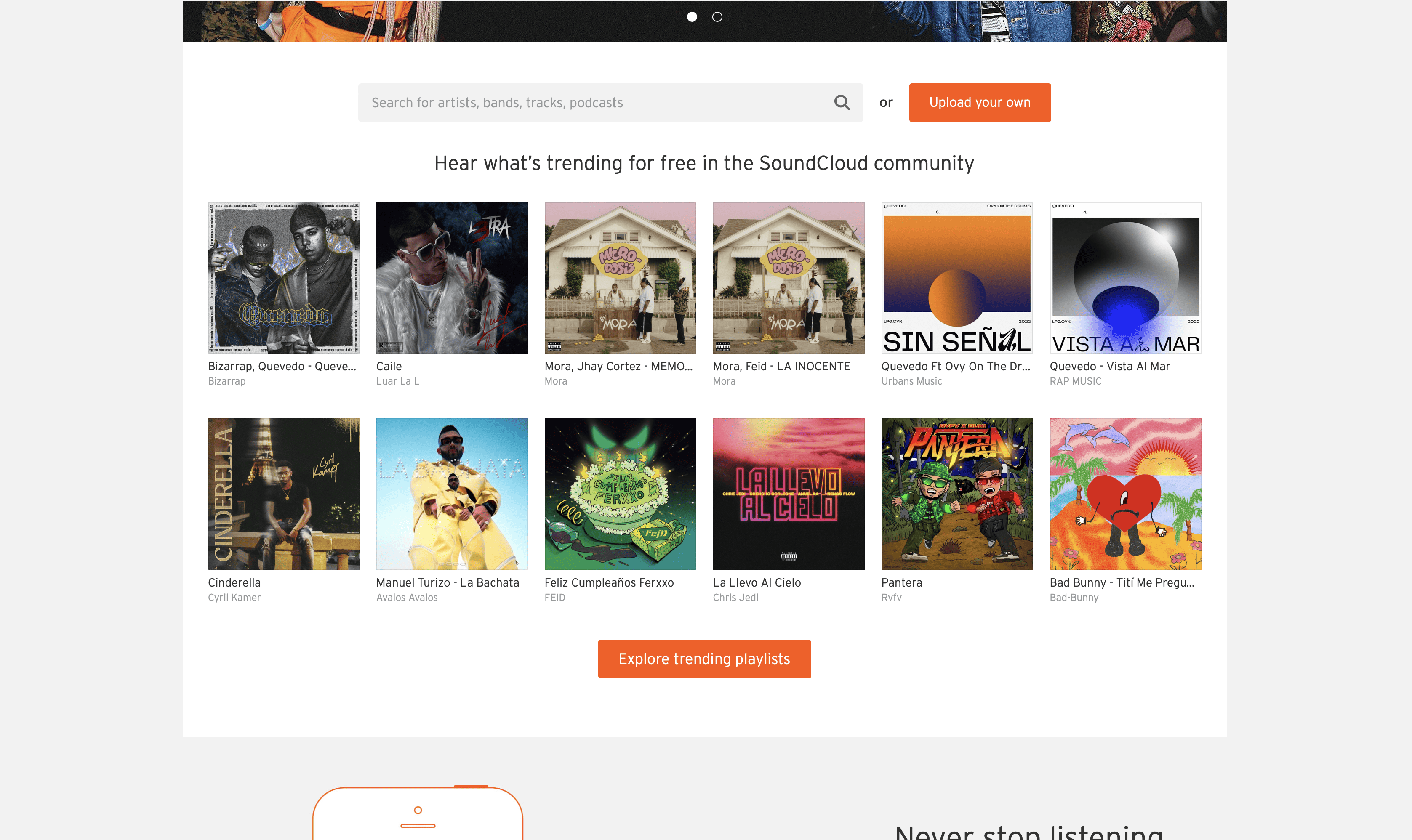
Soundcloud is one of the most popular places to download music, and it offers both paid and free downloads.
One of the main reasons we like Soundcloud is that it has a vast selection of freely downloadable music.
Another thing we like about SoundCloud is the interface.
Finding music is easy with the platform’s intelligent tagging system, which means you can find something in just about any musical niche.
It also displays listeners’ comments cleverly at specific points of a track, which is excellent if you want to highlight a guitar solo or well-delivered vocal.
Soundclick
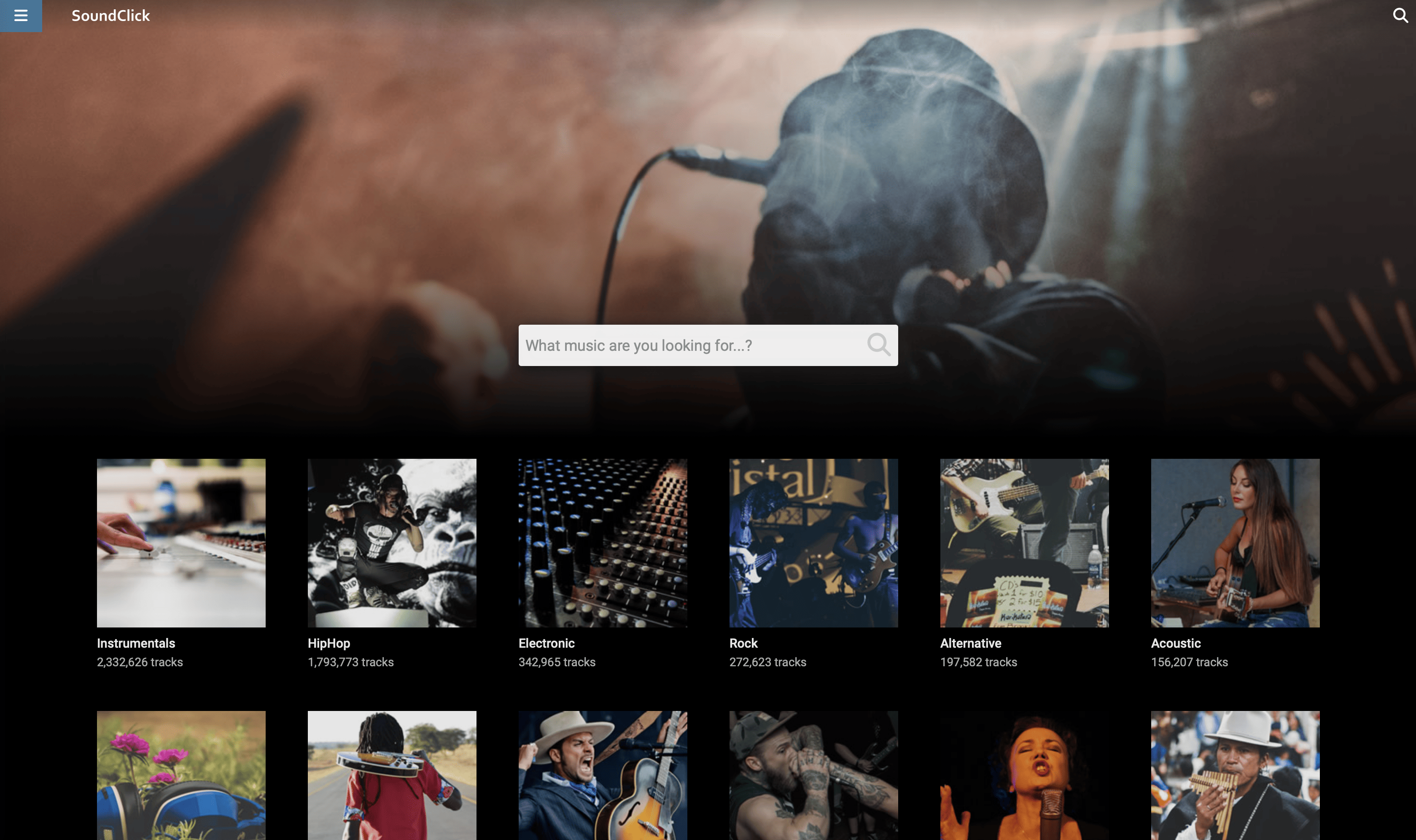
Soundclick provides a platform for artists and bands to sell and share their music online.
It’s been around since 1997, and that says a lot.
Artists can opt for a free or paid account, and not only sell/share music, but also sound kits, and license beats.
We like Soundclick because it features independent music only, and we love discovering new talent.
Another great thing about Soundclick is that the homepage displays songs categorized by genre, and you get an instant idea of the huge number of songs available.
If hidden gems are your thing, check out Soundclick.
Jamendo Music
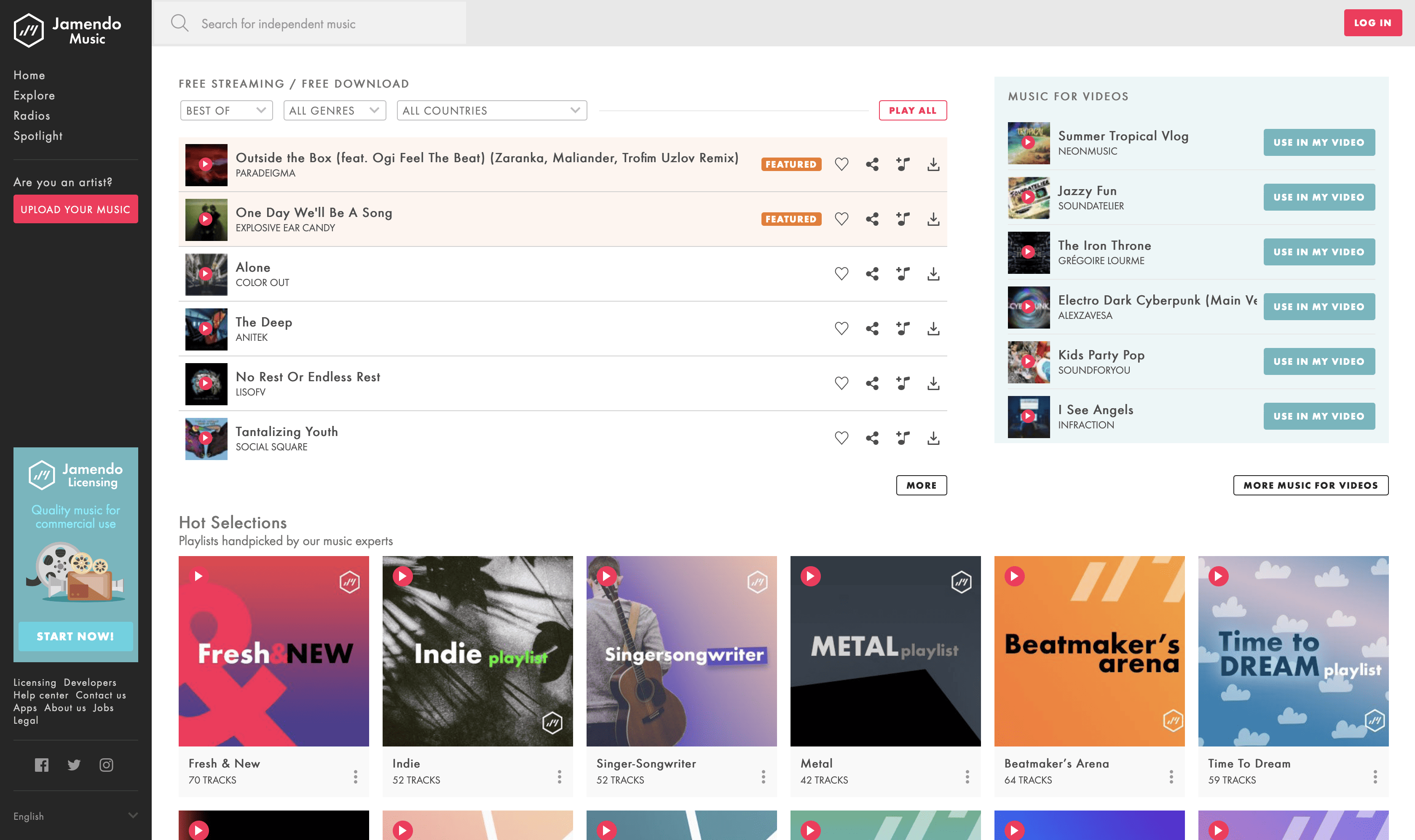
Jamendo Music provides a kind of best-of-both-worlds scenario.
It features themed radio stations, which you can stream without signing up, that allow you to download the current song.
So, it’s a great way to combine streaming, and downloading anything that takes your fancy.
It’s also a great way to find new music with very little effort.
Jamendo Music is a platform that offers musicians various ways to share, sell, and license their music and interact with new fans.
Well worth checking out.
Bandcamp
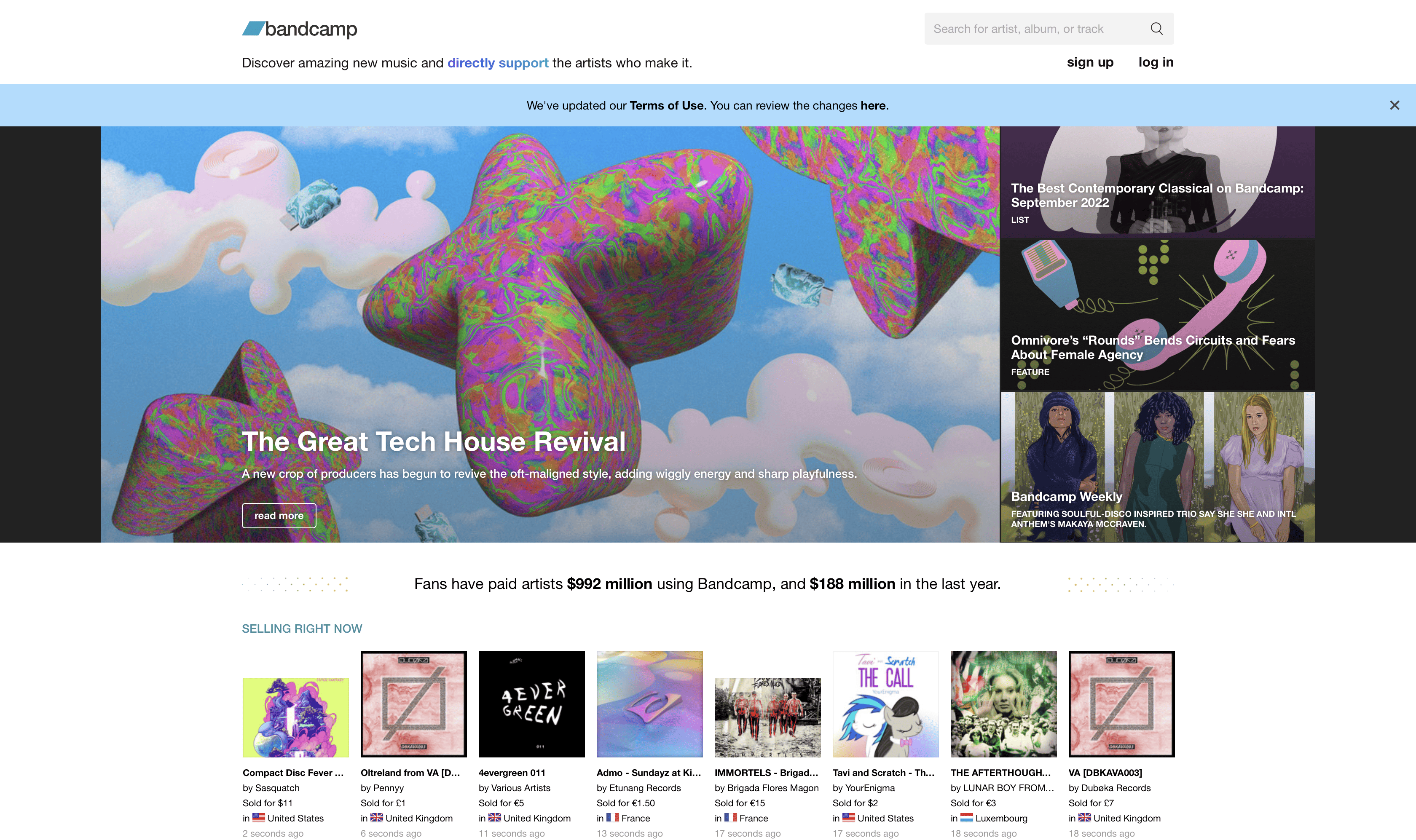
Bandcamp is one of the best places online where independent artists can sell music, merch, and provide info on upcoming gigs.
We love Bandcamp because they still run their Bandcamp Friday promotion (on selected Fridays) when they waive all commissions.
So, on those Fridays, the artists receive 100% of any income generated from sales, which is awesome.
Artists and bands can also make their tracks available for free download, in which case, you can download on a pay-what-you-want basis.
It’s also one of the best platforms if you want to learn more about the artists via their in-depth profiles.
You can browse music by genre, tags, and location; it’s all incredibly easy.
Last.fm
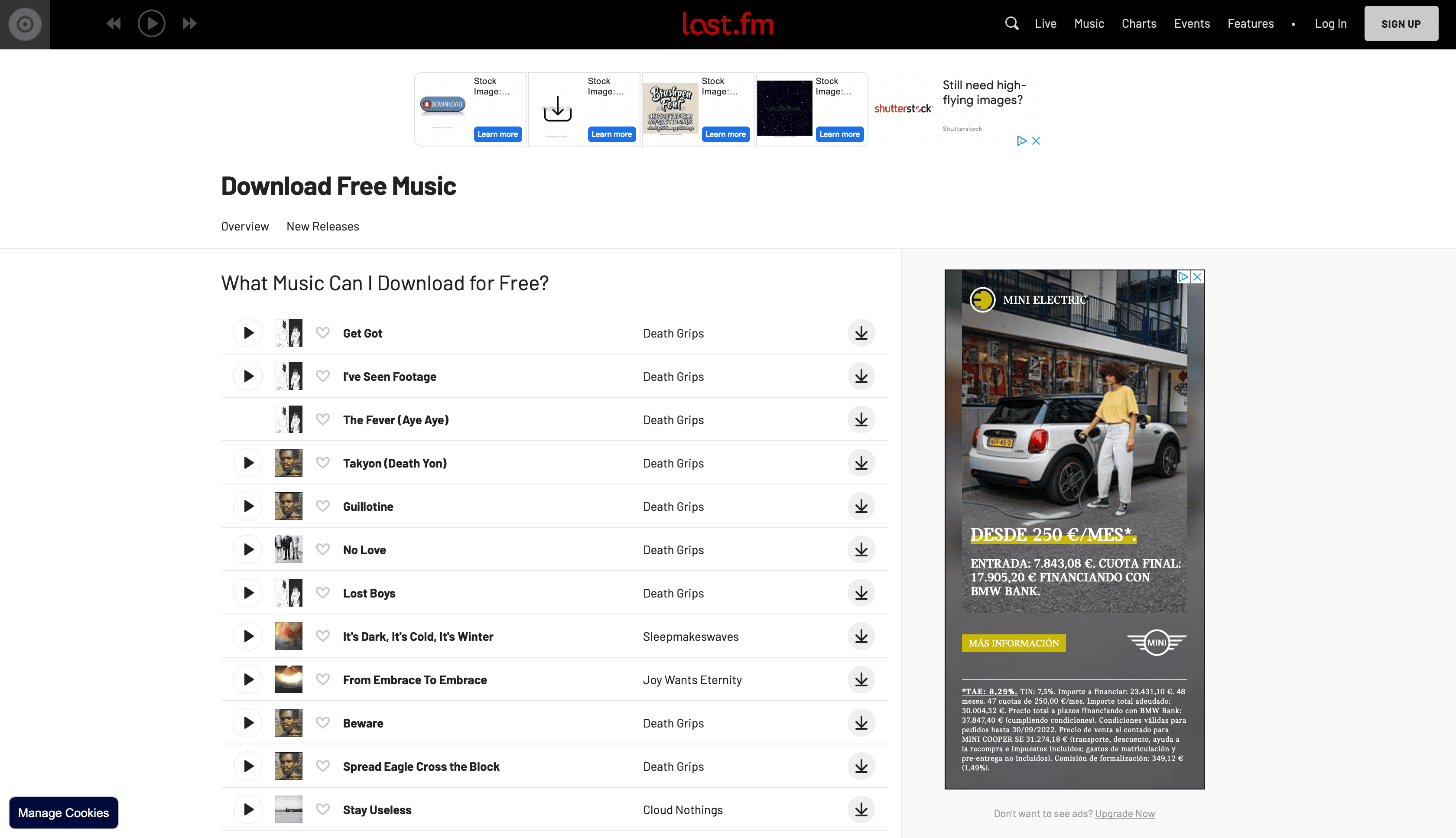
Last.fm is almost a hidden gem itself when it comes to downloading music.
It may be best known for its streaming service, but Last.fm offers a free downloads section – if you know where to find it.
The free download section features a reasonably wide variety of music from new and established artists.
These free downloads come with a downside that might annoy some users.
It’s essentially like an online version of crate digging because you can’t search or filter the tracks in any helpful way.
But, the upside is that crate digging is one of the best ways to find new music, and if you’re in the mood for a lucky dip, Last.fm is a great choice.
Everything In Its Right Place
Streaming platforms have changed how we listen to music forever.
CD sales aren’t nearly what they used to be, yet some people still like to have a physical product.
Downloads are down, but not gone, and until further notice, downloading is still a viable option in the right situation.
Most importantly, this last header allows us to finish with some incredible cinematography matched with an epic track.
Radiohead’s Everything in its Right Place in the movie Vanilla Sky.




